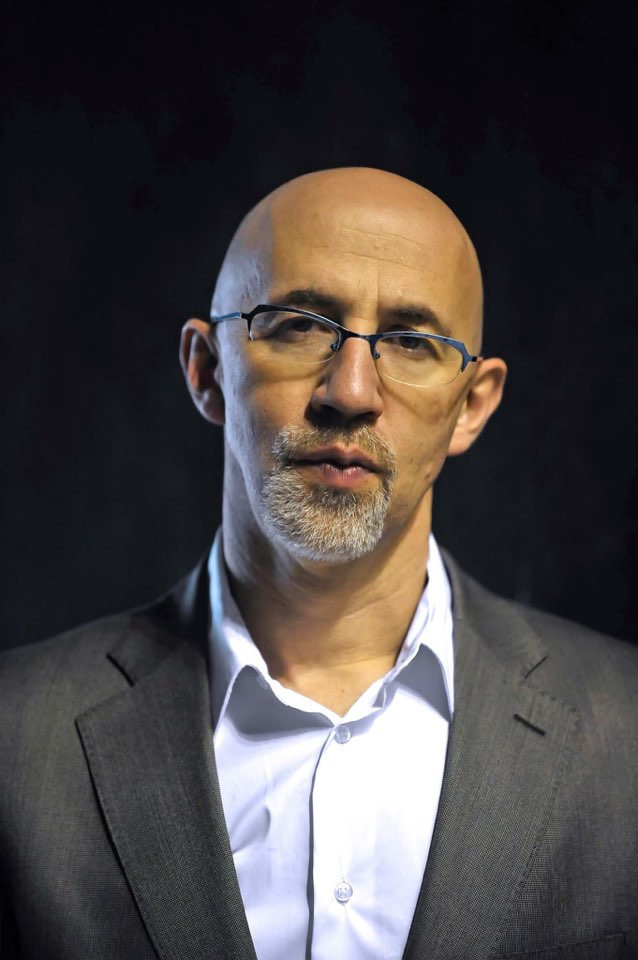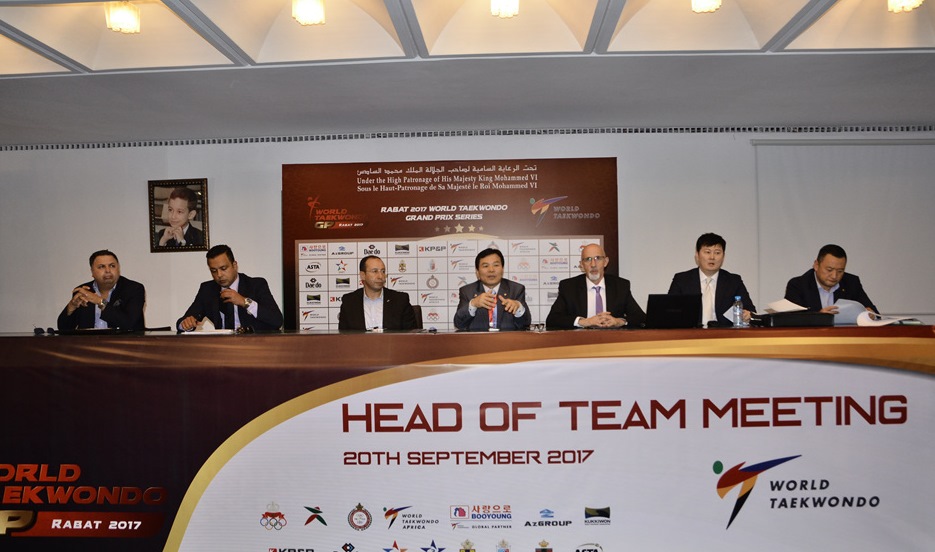One of the most common sights on the sidelines of major taekwondo competitions is a glistening dome bobbing up and down behind the operations desk, directing events, managing crises and handling controversies.
The dome is mounted upon the frame of Parisian Philippe Bouedo, 55, an all-round taekwondo veteran who knows the game inside out - and given his vast experience in the sport, he should.
Muju 2017 was his 20th consecutive world championships. He attended five of those championships as a player, five as a coach, five as a national coach for his native France, and five as the Games Chairman of World Taekwondo. As French team coach and director, he produced six Olympic medalists and six world champions.
Today a seventh dan black belt, and a special advisor to the Moroccan Taekwondo Federation, he has recently passed the torch of WT Games Committee chairmanship to Mohamed Shaaban of Egypt. His new position in WT – adopted as of the Rabat Grand Prix Series 2 in Morocco - is Education Committee Chairman.
“All my life, I have liked creating structures,” he said. “As Games Chairman for 10 years, I created a lot of processes; now it is all fixed. Now, my challenge is to create real educational programs for WT.” Bouedo will be creating programs for athletes, coaches, officials and even doctors. Such as? “Take, for example, athletes,” he said. “We have top-level players, they become world champions, and suddenly they have to talk to the media. We need to guide them how to react: What is their own key message? What is the message of their international federation? Of the organization?”
His work will involve creating programs; certifying them; and eventually making them mandatory. The programs, and all knowledge contained therein, will be available to the entire global taekwondo family via the Internet. “WT needs to increase online programs,” Bouedo said. “You can go to a seminar, but if you go to a seminar, afterward, you need to be updated online.” Program content will include powerpoint and video presentations. Bouedo is excited by the response so far. “I am looking to make a team,” he said. “I am impressed that a lot of people want to work with me.”
Given his own introduction to taekwondo, Education Committee chairman is an appropriate role.
“I was kind of a tough boy: I had some problems at school – some problems,” Bouedo recalled. “I made a lot of fights, so I wanted to learn boxing or karate to be a stronger fighter.” Aged 13, the young tough was introduced to a taekwondo master in Toulouse. His motive was to get tougher – but found that the combat sport provided an education beyond combat. “My master was Lyun-sun Koo and from him, I learned ethics and respect,” Bouedo, who grew up without a father at home, said. “From that time, I totally changed: I was only focused on the sport.”
Bouedo went on to become a nine-time French national champion, took a gold at the 1987 Military CISM championships (while doing his national service) and a bronze in the 1982 Worlds. His high profile in taekwondo led to an unusual media opportunity for a combat sportsman: he was featured in the French edition of “Playboy” magazine. “My style of fighting was very good for pictures,” he said. “It was a report on ‘The Warriors of Taekwondo’ and they had nice pictures of me.” He adds, “But not naked!”
Today, he is more respectable than in his wild youth, and is the father of two sons and a daughter. He splits his time between homes in France and Morocco, and in his spare time, enjoys moto-cross.
Over the decades, Bouedo has witnessed taekwondo’s evolution from Korean martial art to global combat sport.
“When I began, the Korean masters were thinking it was going to be an Olympic sport,” he said. “This was the target.” The first element was an agreement on technical standardization that dissolved the differences between the early kwans, leading to integration in the sport’s homeland, Korea, and then globally. “We made one taekwondo: It is now the same in different schools, all over world, if you practice in Europe or Papua New Guinea,” he said.
Early taekwondo was rough. “There were very few protectors: only the hogu [trunk protector] and groin guard,” he recalled. “Then came the shin guards and helmets and we were competing on hard floors, so we put mats down.” Even today, some of the old guard continue to insist that the tougher, older version of taekwondo is “real” taekwondo. Bouedo disagrees. “What is ‘real taekwondo?’” he asked. “Everything that put taekwondo into the Olympics - that is the real taekwondo!”
After standardization, safety and Olympic entry, the next challenge was transparency. “Dr. Un-yong Kim did a great job to put taekwondo into the Olympics,” he said. “Under Dr. Chungwon Choue, suddenly we got the PSS [the electronic Protector and Scoring System]: The PSS does not care about your nationality, it is just blue or red!” That, and the introduction of the IVR (Instant Video Replay) slashed the possibility of human error in refereering and judging.
A downside to “techwondo” was the changes it created in the game. Knockouts and power strikes were no longer the priority; scoring points was. This led to tactical, but less spectacular, front-leg play, known throughout the game as “new school” taekwondo. In 2017, World Taekwondo changed its rules to bring back the spectacle. Those changes, Bouedo judges, are a success. “I think we now have a very good standard, active game,” he said.
While taekwondo’s Olympic future looks secure – in September, the IOC confirmed its slot as a core sport in Paris 2024 - Bouedo, like other WT executives, is pushing a new format for the greatest show on earth. “I totally support mixed team competition,” he said. “It’s amazing: The players go crazy looking for points - the concept is maximum points in minimum time. For the general audience, for media and for the Olympics, it would be a real plus.”
WT’s next goal could be its greatest challenge yet: To become a mainstream, global spectator sport. “We have amazing players and wonderful stories, so we need to make stars,” Bouedo says. “WT needs to make efforts to let the world know these stories.”
This will be a massive leap, given that mainstream global sports viewers have very, very limited horizons. “For general media, there are only really five sports: football, basketball, Formula 1, tennis and boxing,” he said.
With family connections in basketball – both wife and his son, Arthur, had careers in the game – he suggests benchmarking the NBA. “They create a story, they make champions, they have highlights,” he said. A key element is building stories around top players. “In every game, they tell a story about a player who made the game,” he said. “They highlight one or two players, or number one against number one to create rivalries. We have this in every weight category: We can do the same!” Another element is the NBA’s best-of-breed camerawork and videography. “We need to capture the emotion, the close ups of faces,” he said. “We need cameras, we need all access for photographers and videographers to do better than the basics.”
Yet another element is energizing and capturing the crowd. “People come to see a show with the family, so during a break or a time out, there are pom pom girls, there is drawing of lots and someone in the crowd tries to shoot a hoop, and so on” he said. “They catch the fans when they dance and the fans try to make a show, too: The game is a show, and between the game is a show.”

